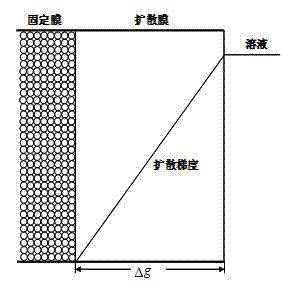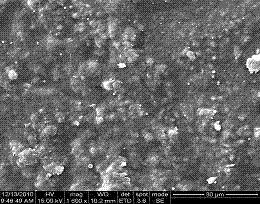Method for acquiring two-dimensional distribution of sediment dissolved reactive phosphorus (DRP)
A technology of two-dimensional distribution and reactive phosphorus, which is applied in the fields of environmental science and earth science, can solve problems such as lack of measurement methods, failure to meet the requirements of DGT high-resolution analysis, and no high-resolution acquisition method yet, to achieve uniform and dense distribution, high resolution effect
- Summary
- Abstract
- Description
- Claims
- Application Information
AI Technical Summary
Problems solved by technology
Method used
Image
Examples
Embodiment Construction
[0043] According to the method of the present invention, the two-dimensional distribution data of dissolved reactive phosphorus (DRP) in the sediments of Taihu Lake is obtained.
[0044] Two sediment samples were collected from Dapukou of Taihu Lake (31°18′42.7″N, 119°56′52.2″E). After they were transported back to the laboratory, the sediments were stratified by 2cm each layer, and each The layer sediments are thoroughly mixed, and after the benthic animals are removed through a 100-mesh sieve, the sediments are re-packed in the original order, the surface is covered with lake water, and they are cultured indoors. After half a month, put 20 water silkworms into one of the sample columns. After culturing for one month, insert the two DGT devices into the two sample columns respectively. After 6 days, take them out for analysis, and obtain the interface to the area 3cm below the interface. Two-dimensional distribution information of DRP content, and make a two-dimensional distribu...
PUM
| Property | Measurement | Unit |
|---|---|---|
| particle diameter | aaaaa | aaaaa |
| particle diameter | aaaaa | aaaaa |
Abstract
Description
Claims
Application Information
 Login to View More
Login to View More - R&D
- Intellectual Property
- Life Sciences
- Materials
- Tech Scout
- Unparalleled Data Quality
- Higher Quality Content
- 60% Fewer Hallucinations
Browse by: Latest US Patents, China's latest patents, Technical Efficacy Thesaurus, Application Domain, Technology Topic, Popular Technical Reports.
© 2025 PatSnap. All rights reserved.Legal|Privacy policy|Modern Slavery Act Transparency Statement|Sitemap|About US| Contact US: help@patsnap.com



